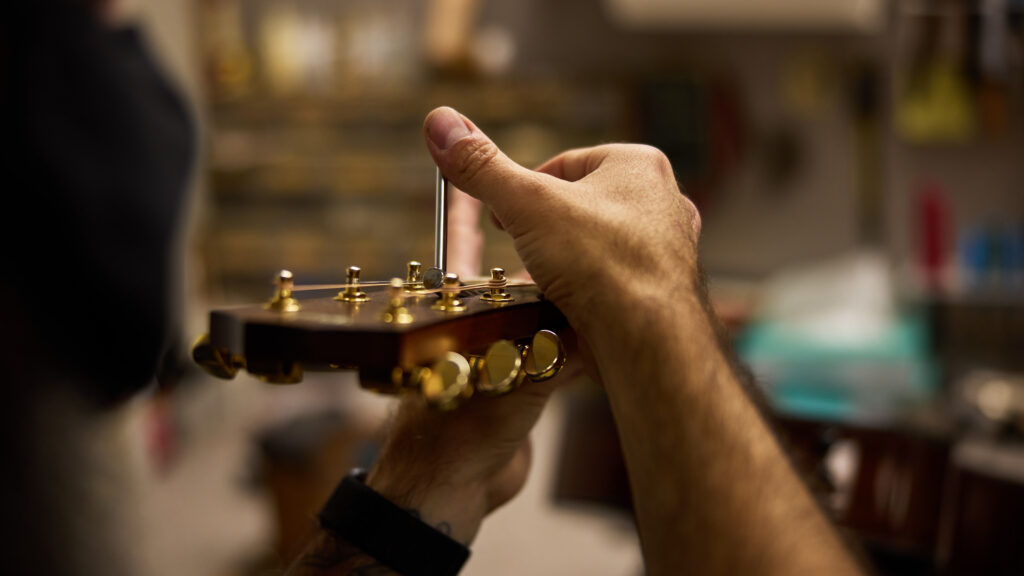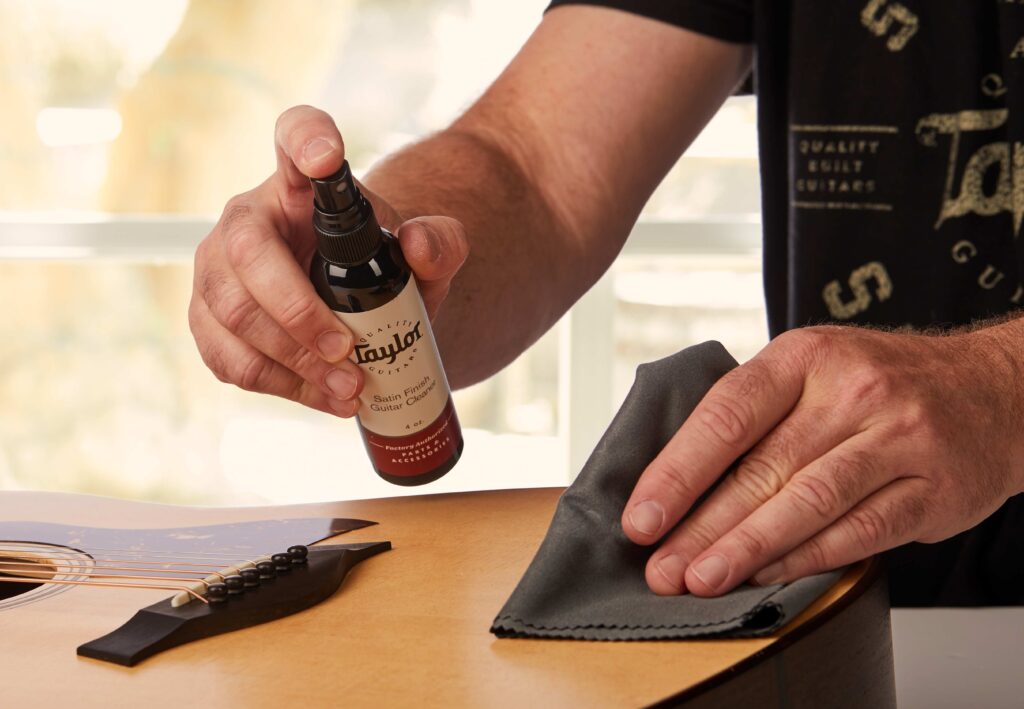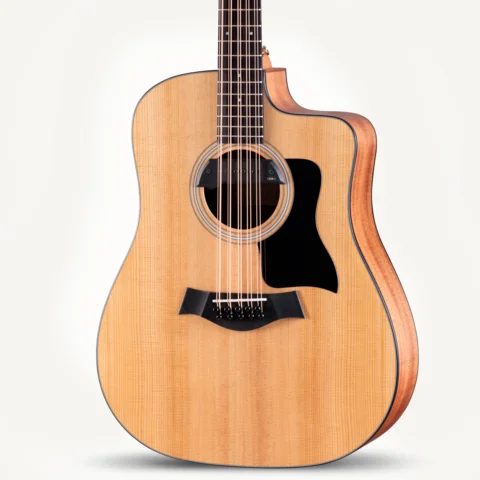It goes without saying that guitar strings are fundamental to the guitar itself—no strings, no music. Strings are the intermediary between the ideas in our heads and the sweet melodies we create.
With that in mind, part of regular acoustic guitar maintenance is replacing the strings.
The age of your strings has a substantial impact on the way your guitar feels and sounds, so knowing how often to change guitar strings is essential information for any player. We’ll be walking you through the process of identifying when to restring and the benefits of playing with a fresh set.
Signs Your Strings Need to Be Changed
Instead of seeking a magic number of weeks or months to wait between restringing, it’s essential to familiarize yourself with the signs that your strings need to be changed. Guitar players of every caliber should be able to tell the differences between fresh strings and strings that are past their prime.
Signs that your strings may need to be changed include:
- Corrosion – If strings appear rusty or tarnished and feel rough when you slide your fingers along them, you should replace them.
- Strings unwinding – Look out for signs of unwinding, especially near the bridge, as the likelihood of string breakage increases dramatically.
- Grime – Dirty strings or fretboards can signal it’s time for a string change. If you have significant buildup on the fretboard or a dry fingerboard, check out our How To Clean a Guitar guide for helpful cleaning tips.
- Kinks – Slightly bent or crimped strings should be changed out sooner rather than later. The most common area to see slight kinks is near the fret.
- Dull sound – Aside from visual cues, a guitar’s sound can tell us if new strings are necessary. Strum a chord—if it sounds lifeless or lacks sustain, you may want a fresh set of strings.
Lastly, there’s a more obvious sign you need to restring is if they break. Unless you’ve recently restrung, breaking a string during a practice session or show is the perfect cue to put on a fresh new string set.

How Often Should You Change Guitar Strings?
As convenient as it would be to say “change your strings every two months” and call it a day, the reality is more nuanced. The ideal interval between changing strings will depend on how often you play, the situations you play in, and the tone you prefer.
Different players have different needs and will restring their guitar accordingly. A touring musician or someone who gigs frequently may want to change their strings every two weeks. Stadium headliners may have guitar techs that change strings for them every show.
For the casual player, restringing every two or three months should be more than enough. You don’t need a fresh set of strings for every jam session, and if you’re primarily practicing at home, you can survive with less frequent restringing. Ideally, you should change your strings whenever you want or need to change them.
So, perhaps a better question than “how often” should be “when should you change your strings?”
Many artists will restring:
- Before heading into the recording studio
- Before a big show
- If their performance is being filmed
- Once they notice the strings feel or sound off
As you play more, you’ll start to discover your rhythm for string changes. Take note of the way your guitar strings feel and sound at different stages of their life, and you’ll soon find your individualized answer to the question of how often you need to restring.
Why It’s Important to Change Your Strings
We want to stress again that the frequency with which you restring your guitar is more about personal preference than any hard and fast rules. With that said, fresh strings come with a host of benefits that many players enjoy. Let’s look at some of the reasons you may want to change your strings regularly.
They Sound Brighter
A new set of strings will sound brighter. In the guitar world, the “brightness” of the instrument typically refers to the high-end or treble sound. Describing bright sound is notoriously tricky, but words like “clear,” “crisp,” or “chime-like” are all associated with the concept of brightness.
On top of sounding bright, fresh strings also have more resonance to them. Less dirt and grime on a string means it vibrates longer, which leads to ringing, sustained notes.
Ultimately, your sound is personal. Many players will change strings before recording to achieve that preferred sound, but that may not always be what you’re looking for. You might prefer the sound of week-old strings or even three-month-old strings—and that’s okay. Trust your ears. Play and record with strings that sound best for the project at hand.
They’re More Durable
Aside from sound, durability is one of the main reasons players restring before a big show. The last thing you want is for a string to break during an important performance, and old guitar strings, especially if brittle and corroded, are more likely to snap during play.
Fresh strings have a longer life and shouldn’t break on you during your big moment. And once you stretch them out, new strings will also stay in tune longer and better than an older set. Trustworthy, durable strings are a guitarist’s best friend.
They Feel Fresh
Simply put, new strings feel good. Play a freshly strung guitar, and you’ll see why—it’s addictive. That’s reason enough to restring semi-regularly, but there are more tangible facts behind the feeling of fresh strings.
Corroded or dirty strings are rough on the fingertips, while new strings are silky and playable. Your fingers glide with ease across clean strings, making chord changes effortless. This smooth feeling has the added benefit of minimizing squeaks and string noise as you slide from note to note.
They’re More Stylish
New strings not only feel better but look better, too. Shiny, new strings scream, “I take care of my guitar.” The golden bronze of the low strings dazzles in the spotlight, while the silvery high strings draw clean lines against the fretboard.
Whether you’re filming a music video, playing your first gig at a coffee shop, or strumming for a few friends, a beautiful guitar deserves fresh strings to match.

Tips For Prolonging String Life
A new set of strings is pure joy, but many of us don’t have the time or money to slap on a fresh set every few days. To delay restringing, there are a few things you can do. Here are some tips.
Wash Your Hands Before Playing
Washing your hands before you play is a terrific way to prolong string life, as you won’t transfer dirt and oils from your hands to the strings. Grime clings to the strings and can compromise their look and sound, so it’s best to remove dirt from the equation altogether.
No matter how hard you scrub your hands before a session, some amount of oil and sweat is bound to transfer from your fingertips to the strings. Quickly wiping down the strings with a cloth after each time you play is an excellent habit to build, as you reduce the risk of rust or tarnish.
These two hygiene adjustments alone can add weeks to the life of your guitar strings.
Use High-Quality Strings
Taylor sets up all the guitars with Elixir NANOWEB strings, with the expectation of the D’Addario strings on the American Dream Series, Nylon-string guitars, and the GS Mini Series. A thin coating protects the strings, helping them last longer than standard options. In general, shelling out a few extra dollars on a set of higher quality coated guitar strings will extend your time between string changes compared to uncoated strings. While your Taylor comes with Elixirs, feel free to explore the sound and feel of other string brands to determine what works best for you.
If you decide to experiment with other strings, be sure to buy the correct gauge. String gauge, denoted in inches, refers to the thickness of each string, and guitars are typically set up to take a specific gauge. For example, a Grand Auditorium will play best with .012-.053 gauge strings.
Here’s a complete list of recommended gauges for different Taylor guitars.

Store Your Guitar Properly
Proper guitar storage can also prolong the life of your strings by protecting them from the elements. Keeping your guitar in its hard case or gig bag, especially if you don’t play it every day, can keep strings fresh for longer.
Whether you store your guitar in a case or not, ensure the humidity in the room is not too high, as this can lead to corroded strings. A good humidity level for guitars is 45-55% relative humidity. A hygro-thermometer can help you monitor humidity levels in the room, allowing you to make adjustments to protect your guitar and its strings.
New Strings, New You
A fresh set of strings can help you fall in love with the guitar all over again. Brighter sound, longevity, and endless playability are just some of the benefits of brand new guitar strings.
If you think it’s time to change your strings and you need a refresher, learn how to change them with our guide. Once you’re all set up, explore other fundamental skills with the Taylor Guitars blog, like How To Put On a Guitar Strap and How To Hold a Guitar Pick.
You’ll be an expert in no time.






























































